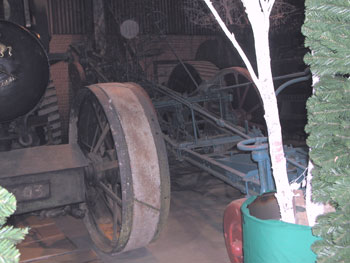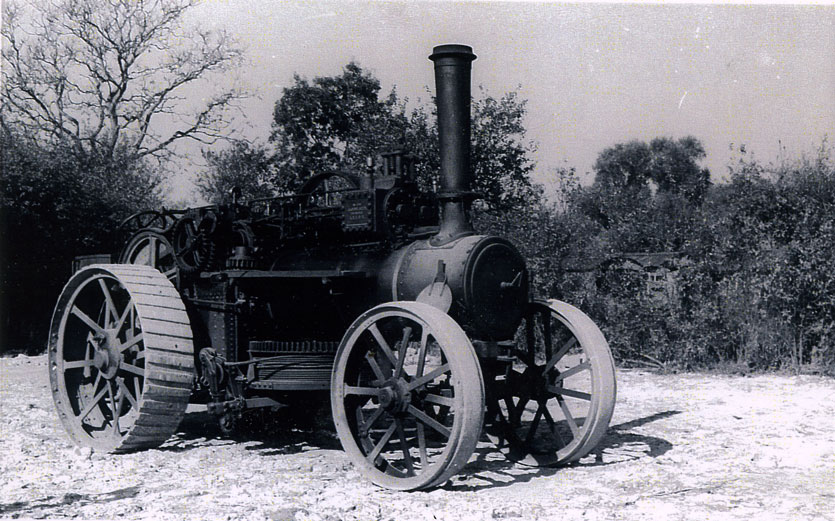More of James Weston of Yardley Gobion
Below you will find:-
More of James Weston.
Three brothers involved with the workhouse.
Memories of Moorend 1947-1951.
The Ploughing Engine at Moorend.
An excerpt from a piece of writing by Dorothy Warren about the Wharf at Yardley Gobion.
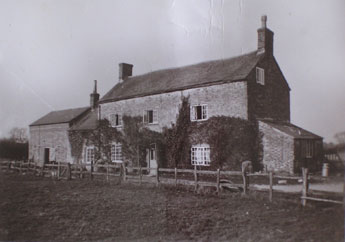
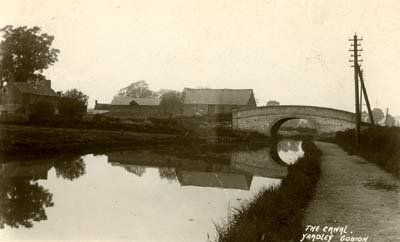
The bridge at the wharfe Yardley Gobion
In 1845 a Miss Sarah Wells was listed as the landlady of the pub. She gave evidence in a trial of three men accused of stealing a valuable mare from a Puxley farmer. According to the Northampton Mercury Sergt. Gwynns of Potterspury and Inspector Kirby of Towcester searched diligently in all directions and the mare was discovered hauling a boat of coals towards London. The police went by train to Boxmoor and awaited the arrival of the boat there, and arrested the men all from Deanshanger, two of whom were known to be desperate characters. Two were acquitted and the other transported for life. Miss Wells was in the pub until at least 1849. She was probably employed by James Weston who was listed in Kelly’s Directory of 1847 as farmer, landlord of the Packhorse, and wharfinger. By 1850 she had been replaced by Miss Hard or Hurd. In 1860 James Weston was sued in connection with a load of hay bought at Buckingham and delivered by boat to Yardley Wharf. The verdict was in his favour. The 1861 census shows John Weston aged 25, at the pub, described as victualler and farmer’s son, with housekeeper and carter living in. Frederick another son of James was running the Packhorse, with a younger brother and housekeeper. James and Emma the parents were living in a farmhouse soon afterwards demolished, on the land on which Elmstead and the Red House were afterwards erected, and sold by James, (35 below). In April 1862 James Weston advertised that he was leaving the Wharf and had for sale boat building plant, tools, 3 canal boats, 5 timber carriages, 3 carts, 2 waggons, etc. and household furniture.
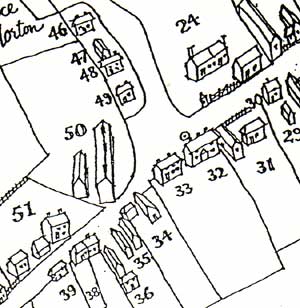
Brenda Pittam 2007
Brothers Joseph, Henry and James Weston, sons of Henry and Sarah (Sally) became involved in supplies and services to the Potterspury Union Workhouse situated in Yardley Gobion. On the first page of the first available Minute Book of the Guardians we see that Henry Weston was already supplying bread to outdoor paupers and bread and flour to the workhouse, receiving in excess of £60 for this quarter as well as supplying eggs and milk, adding another £10. In the ensuing few year there appeared fierce competition between him and Mrs Jemima Smith also in the village, a farthing a loaf making the difference between having their tender accepted for the next three months or not. The competition continued up until the early demise of Henry in 1854. At this time James was used by the workhouse as a carrier, then as a publican, as a supplier of ale &c. and later for supplying fat pigs and even potatoes, by the 1860s he was recorded as a butcher. Joseph appeared first recorded as a barber but later it was noted, for shaving &c.
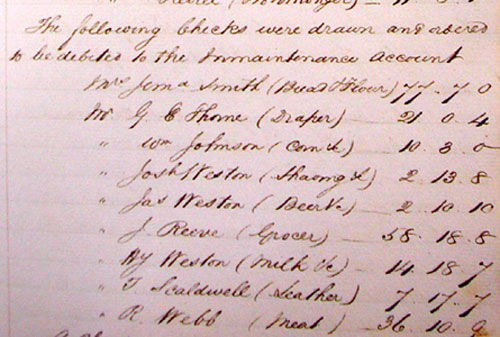
|
——————————————————————
|
|
A LINK BETWEEN THE WESTONS AND SMITHS THE BAKERS, IN YARDLEY
Arthur Smith grandson of Jemima Smith the baker above, married Amy Weston born in Hartwell in 1859, they were married I believe, in Mile-End, Old Town, London. Amy was the daughter of Henry Weston and Mary, farmer and miller, she was born while they lived at Hartwell Cottage, Hartwell, later living at Chapel Farm, Hartwell. She was one of twelve possibly thirteen children. Henry was the only child of John Weston son of Henry and Sarah Weston of Yardley Gobion. John was a baker at Ashton and later a farmer.
|
|
———————————————————
Gerald Smith and his sisters Beryl and Sheila lived in Yardley Gobion with their family for three years, this obviously had a lasting effect on his memory as the article below shows. The photograph shows the cottages where he lived in Moorend, in the garden where Aurora now stands.
I remember Charlie Weston sat on the bonnet of a jeep, feet on the bumper with walking stick, driving through the village with his son driving, Charlie Weston was certainly the main man!! He had a railway carriage sited on one of his fields as a cricket pavilion. The field was on the left, about half way between Yardley and Grafton. I used to absent myself from school and go with Charlie Whitmarsh and other workers whose names escape me sat on the trailer because I was handy for opening the gates. I used to wait opposite the Hurst’s house for the tractor and go off to far flung places like Grafton! Mr and Mrs Hurst befriended my family. They were a lovely couple. My sister thinks they went to live in Canada but she isn’t sure. I remember my mother crying when the trees were all cut down in the lane leading to the farm. The trees were both sides of the road and formed an arch, the trees were cut down by hand saw, no chain saws then! I have been back recently and all that is left is part of the gable end wall to our house. We shared a well with the Philips family, we had no electricity and the sewage was taken away every week by lorry. Mr and Mrs Phillips were very old even then which would have been around 1948, he was a thatcher and I think he sometimes pared hedges. I remember Mr Philips was thatching a roof near the church and he had his bicycle stolen, it was recovered in Northampton that same night and the robber arrested – a bit different to nowadays! I used to go down to the farm in the morning before school to get the milk, I waited while the cows were being milked by hand, the milk was then filtered through some cloth and I used to take the milk home still warm. It must have looked comical, me entering the yard to get the milk, having to walk through about 40 geese, me being 7 years old and 3 foot nothing, if any stranger came into the yard the geese would extend their necks in unison, a frightening sight. I stood in the kitchen of the main house on a few occasions and remember cheese and joints of meat hanging from the beams but that was as far as I ever got inside the main house. I remember one of the Weston’s daughters was married to a soldier who was killed in the war, I think his family produced lemonade or mustard. At harvest time all the rabbits used to collect in the wheat that was remaining to be cut and when they bolted all hell would break out with shot guns going off all around and the dogs chasing. Charlie Weston’s son was a great shot, he would take a bead on a rabbit and rarely missed. The farm workers would gut the rabbits then slit a leg, cross the legs and put them on a long pole and go around the village and sell them. The coal was delivered by horse and cart. When they were threshing in the top yard it was amazing watching the dogs flip the rats in the air, the rats were dead when they hit the ground. The pond had a net on the bottom which could be lifted to recover the eggs the ducks laid in the water.
Daney Williams saved my life without any doubt. We were under the bridge down at the wharf with two other boys, we decided to walk crab style on the narrow side of the bridge. I toppled into the canal, two of the lads shimmied up the drain pipe at the side of the bridge and ran away but Daney extended an arm to save me. My mum and dad were so grateful they gave Daney a half crown – a lot of money then, I don’t think many eight year boys would have had the courage not to run, I probably would have run as well!
I remember the bike races in the Rec. so they must have started in the late 1940s or very early 50s. |
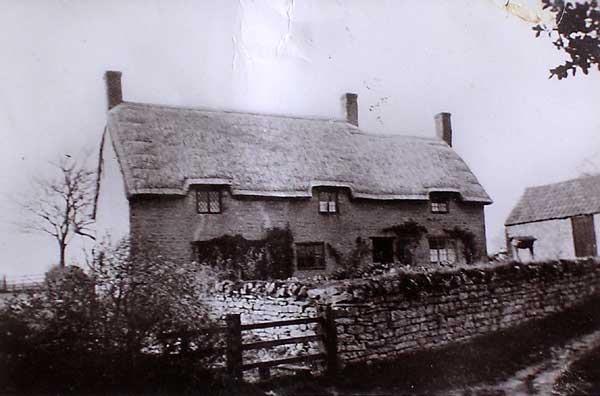 Gerald Smith 2008 |
|
———————————————————– We have found a photograph that includes Gerald’s sister Beryl thanks to Sheila Leath, Hilda Horton, Marjorie Swain, Joyce Cave |
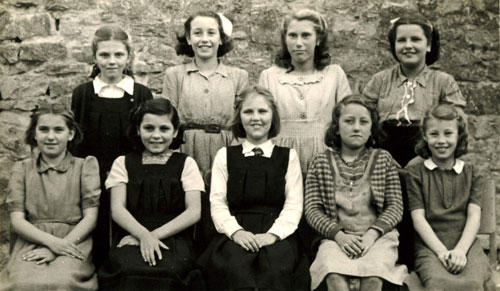 |
———————————————
|
THE STEAM PLOUGHING ENGINE
Charles Weston was the proud owner of two steam ploughing engines similar to the ones shown here, which can be viewed at the Thurstford Collection in Thursford in Norfolk. I am led to believe that not only did he plough his own land but did contract work with them as well. I am not sure of the total period that they were used but someone who is 90 now, can remember seeing them in use so they were probably used up to the end of the1920s and maybe later, but I am sure someone will tell me. I have since been told by Geoff Warren that the Steam Ploughing engines were stored in the Barley Barns at Grafton Regis, these barns are now a house, situated on the right hand side as you go down towards the church, just before you get to the manor. See below for picture of the actual model of his ploughing engines and a little of their history. Mr Weston also had a steam engine which was used for the threshing of the wheat etc. this was kept in Tarry’s barn until late 1940s, I understand that Mr. Billy Allen from Grafton was involved in its use and would come up to Yardley when it was no longer used and give it a polish. |
|
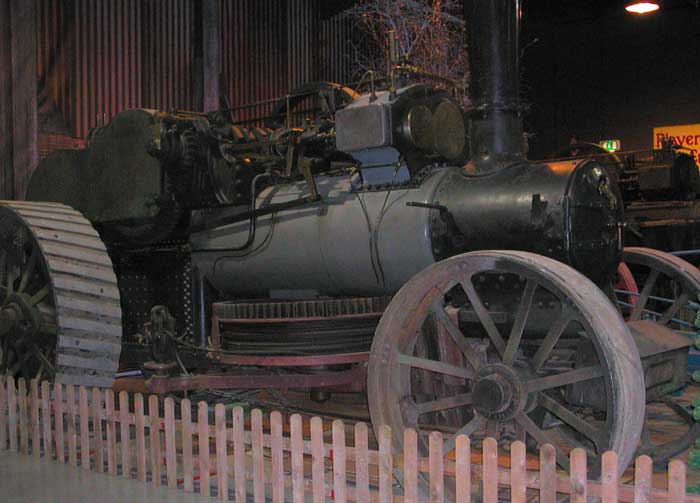 |
|
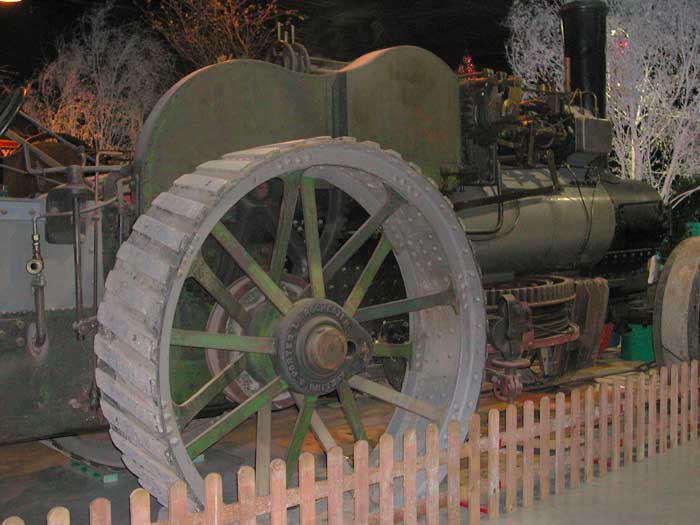 |
|
 |
|
The Plough itself was extremely long, ploughing at least 4 furrows at a time, quite an advance from the single furrow horse plough. It was the same both ends but in reverse so that it could be pulled up the field ploughing one side, then tipped up to plough with the other end, using the plough shares on the other side.
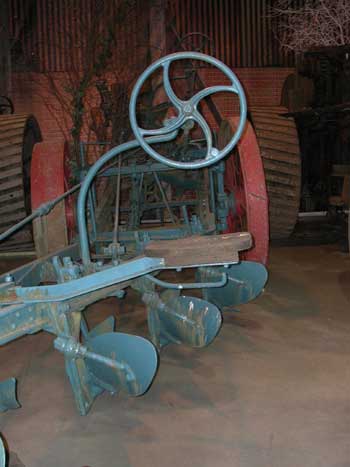 Many thanks to the Thursford Collection for allowing me to show the photographs of their Ploughing Engine and Plough. They can be viewed in the special new building at the Thursford Collection, Thursford Norfolk. If you are interested in seeing pictures of this type of plough in use click here STEAM PLOUGH CLUB 2012 updateInformation on the history of Charles Weston’s ploughing engines below was given to me at the end of 2008 by John Crawley founder of Bedford Steam Engine Preservation Society in 1956 ( John sadly died April 2011) The engines were McLarens not the usual John Fowlers. The engine numbers were 1616 12 hp built 1919/1919 Record number BD 5869 (I imagine this a database number) and 1617 12hp built 1918/1919 Record number BD 5670. They were new to Thomas Booth & Son, Evenly, Northants on a date not recorded then sold to Midland Plough & Transport Company of Towcester. Then sold to Charles H Weston. They were scrapped either in 1935 or 1955 the date in the record is indistinct, I would think it was 1935. Since I obtained this information and was not able to find out what happened to the engines I spoke to Les Dickens late of Yardley Gobion he remembers riding one of the engines to Roade railway station with George Horton, seeing the chimney stack being folded down and it being loaded onto the train to go to Sheffield.. As Les was very, very young in 1935 my guess is it was scrapped in 1955.
|
